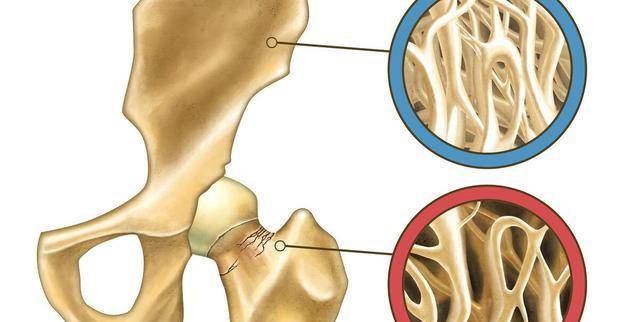We have a total of 206 bones in the human body, and these bones are connected by joints. Within each joint, adjacent bones are covered by cartilage, and there is synovial fluid surrounding them for lubrication. This way, the joints act as a buffer, bringing our body together to perform a series of complex movements.
Generally, before the age of 40, the joint function in the human body is good. The synovial fluid nourishes the cartilage and bones, keeping them separated to avoid direct bone-to-bone contact, which helps alleviate bone wear and aging.
The basis of osteoarthritis is the wear of cartilage due to internal and external factors
1. Internal factors
As age progresses, the synovial fluid around the joints decreases, leading to reduced nutrients reaching the cartilage. The cartilage gradually shrinks and ages, causing friction and wear. After cartilage wear, the bones come into direct contact, eventually resulting in osteoarthritis over time.
2. External factors
External factors such as trauma, inappropriate exercise, heavy physical labor, can damage the joint cartilage, or prolonged close contact and friction can also lead to cartilage wear.
Whether it’s internal or external factors, once the cartilage wears down, it enters a dynamic process of wear and repair. If the repairing process is hindered, damaged cartilage may remain in a worn-down state, leading to direct bone-to-bone contact. Alternatively, excessive fibrous tissue formation around the cartilage may compress the surrounding joints, resulting in swelling, pain, and eventually osteoarthritis.
Can glucosamine repair worn cartilage?
Glucosamine, or glucosamine sulfate, is a monosaccharide found in the body, including in the joints. Its primary function is to promote synovial fluid secretion in the joints, lubricating them to reduce friction, thereby alleviating arthritis inflammation, swelling, and pain.
Glucosamine can reduce the inflammation in the joint area, but it cannot reverse already worn cartilage. This conclusion has been confirmed by the medical community.
A tracking experiment conducted by the U.S. National Institutes of Health showed that within 6 months, arthritis patients who took 1500mg of glucosamine daily did not show significant cartilage repair. The effect of relieving arthritis symptoms was only 1.2 times that of the placebo group. From this research, it is evident that glucosamine has minimal effects on cartilage repair and mainly acts as an anti-inflammatory and anti-swelling agent. Glucosamine’s role in joint cartilage is primarily as a nutrient.
Why does this result occur?
Because cartilage repair relies on the metabolism and renewal of cartilage cells, which have limited renewal speed and capacity that decline with age. Therefore, even with ample glucosamine nutrient supply to worn cartilage, the worn cartilage remains irreparable.
Final summary
01 The role of glucosamine in treating worn joint cartilage includes promoting synovial fluid secretion, providing nutrients to joints, helping relieve arthritis inflammation, and providing some anti-inflammatory and pain relief effects, but it cannot repair already worn cartilage.
02 If there is no significant relief of arthritis symptoms after persistently taking glucosamine for 6-8 weeks, consult a doctor for a medication change rather than relying excessively on the advertised efficacy of glucosamine.
03 Older adults seeking to prevent arthritis and reduce bone diseases may consider consuming high-calcium foods and using calcium supplements when necessary. Additionally, getting adequate sunlight to promote vitamin D synthesis can help prevent age-related bone diseases.
I am Dr. Xu, an orthopedic doctor, follow me for daily bone health knowledge sharing.


